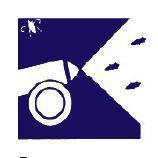SAS Urban Survival Handbook (43 page)
Read SAS Urban Survival Handbook Online
Authors: John Wiseman
Tags: #Health & Fitness, #Reference, #Survival, #Fiction, #Safety, #Self-Help, #Personal & Practical Guides, #General, #Survival Skills

DEPENDENCE
Dependence on medication, especially tranquillizers, sleeping tablets and painkillers, is a very unpleasant predicament to be in. You may feel unable to cope without the drug – and terrified of symptoms returning. You may even be physically addicted to a drug – your body may demand it, while your mind is trying to tell you that you don’t need it. There are help groups and most doctors will be sympathetic. Quite often there may be alternative safer medicines. You must have help to escape dependence on medication.
GARAGE/SHED
All the ‘nasty’ chemicals for household use should be kept in the garage or shed – and locked away.
Glues
Solvent-based glues
present a risk of inhaling the fumes. This can lead to dizziness and loss of judgement while working. Longterm effects may be more serious (see
Solvents in the home
). If you are badly affected by fumes, do not over-exert yourself—your heart may be at risk. Get to fresh air (see EMERGENCY! panel). Only use in a well-ventilated area. These glues are also highly flammable. Continue ventilation until the glue is fully dry. Avoid skin contact. Do NOT use solvents to clean the skin. Extensive contact may require medical attention. Soaking the affected area in soapy water may allow you to peel the glue away gently. (See also HEALTH:
Substance abuse
).
Eye contact 2 or emergency medical attention
Two-part resin-based glues
have been linked to asthma. Wash off before the glue ‘sets’ with warm soapy water or a skin cleanser. Try to AVOID skin contact—chemicals may be absorbed into the skin.
Skin contact 3/Eye contact 2 or emergency treatment
‘Hot melt’ adhesives
can involve temperatures of 200°C and produce deep burns. Wear gloves and protective clothing. Cool areas of contact immediately with cold water—but don’t attempt to remove the glue. Don’t burn the glue—a toxic smoke is produced. These glues do not have a long shelf life—old glue may ignite, in use.
See EMERGENCY! panel: Skin contact 3 (but cool first and leave fixed patches of glue)/Eye contact 2 or emergency treatment
Water-based (PVA) wood glues
are known to cause dermatitis. Avoid skin contact. Wash from the skin before it dries. Wash/rinse immediately from mouth or nose. If a large amount is swallowed, give casualty water to sip and seek medical attention.
Skin contact 2/Eye contact 2
Tar/grease-spot removers
Most contain fairly heavy-duty toxic solvents such as tetrachloromethane, xylene or carbon tetrachloride. If swallowed may lead to gastrointestinal problems and loss of consciousness. Avoid breathing vapours, which are also toxic—use ONLY in a well-ventilated area. If affected, get to fresh air and seek medical attention if you don’t feel better in a few minutes. Tetrachlorethylene may be a constituent. You MUST avoid inhalation or swallowing—or even prolonged skin contact. There have been many serious reactions. If affected, beyond a little dizziness, seek medical attention. Regular exposure may lead to liver damage.
Skin contact 2/Eye contact 2
Turpentine
Very poisonous.
If swallowed, do not induce vomiting
—seek emergency medical attention. May cause severe gastrointestinal irritation, breathing difficulties and kidney damage. Urine may be dark and smell of turpentine. Use in a well-ventilated space.
Skin contact 2/Eye contact 2
Turps substitute/white spirit
Similar to turpentine. Flammable. If enough is swallowed there may be lung irritation, fits, ‘drunkenness’ and headaches. In severe cases there may be lung problems—even coma.
Do not induce vomiting
—seek urgent medical attention. Use only in a well-ventilated area.
Skin contact 2/Eye contact 2
Petrol
If swallowed, severe gastrointestinal irritation and pain is likely. The vapour alone may cause damage to the lungs or pneumonia-like disorders. Swallowing large amounts can lead to convulsions and unconsciousness.
NEVER induce vomiting
—the risk to the lungs is severe. NEVER syphon petrol by sucking on a tube. Highly flammable/explosive. Use in a well-ventilated area.
Skin contact 2/Eye contact 2
Caustic soda
Sodium hydroxide. Used as a super-strength cleaner and drain clearer. Also the main constituent of paste paint strippers. It can react violently to acids or bleach. NEVER use in the toilet with other chemicals. Caustic soda produces a violent exothermic (heat-producing) reaction with water—the right concentrations will reach ‘boiling point’ very quickly. This substance is HIGHLY CORROSIVE. Do NOT breathe in the powder.
If swallowed, do NOT induce vomiting.
Give milk or water to sip—1/4 litre (1/2 pint) maximum for children and seek urgent medical attention.
Skin contact 3 (urgent)/Eye contact 2 (urgent—permanent damage is possible)

WARNING
When mixing caustic soda, always add caustic soda crystals to water – NOT water to crystals. A violent reaction may occur, with droplets of hot caustic liquid ejected.
Paste paint stripper
See Caustic soda
Liquid paint stripper/brush cleaners
Liquid strippers may contain methanol (methyl alcohol). Lowering of the blood pressure, headaches and nausea are common. If swallowed, damage to the eyesight may occur. Caustic effects may be very serious—
do not induce vomiting.
Give water to sip. Seek urgent medical help. May also contain dichloromethane, which affects the central nervous system and may be absorbed readily by the skin or by inhalation. Skin contact with all paint strippers is painful (see DIY/CRAFT HAZARDS). Serious dizziness may occur, making it unsafe to work—with long-term use the heart and lungs are at risk.
Skin contact 3 (NOT hot water!)/Eye contact 2 (urgent)
Antifreeze
May contain methanol but more likely ethylene glycol, which is highly poisonous. Unfortunately, it has a sweetish taste and a bright colour—so children may be very interested. It is extremely dangerous if swallowed. Seek urgent medical attention. Observation is recommended for at least 48 hours. All manner of serious effects may occur from oxalic acid formed in the system—affecting soft tissues, kidneys, brain and heart. Giving a small amount of whisky or brandy to drink (these contain ethyl alcohol) should slow the progress of the ethylene glycol into the blood. Seek medical help first!
Skin contact 2/ Eye contact 2
Methylated spirits
Contains ethyl alcohol, methanol (which can cause permanent eye damage) and pyridine. See
Surgical spirit. Skin contact 2/Eye contact 1
Rust removers
These are highly poisonous and highly corrosive. Avoid all skin and eye contact. Swallowing could be very nasty indeed, with burning pains and vomiting. Do NOT induce vomiting.
Skin contact 3/Eye contact 2 (urgent)
Slug and snail killers
May contain metaldehyde. Highly toxic. It is unlikely to be swallowed by humans in sufficient quantities to do harm, but may cause gastrointestinal problems, fainting, nausea or breathing difficulties. Medical attention is more likely to be needed for small children. Dogs may be at risk.
Rat/mouse poison
This rates high on the lists of dangers to children. Poisoning in adults is rare. The main constituents are anti-coagulants—agents which prevent blood clotting, such as warfarin. Symptoms are blood in the urine and faeces or bruising. NEVER have these poisons in the home if there are children about. A serious infestation of rats or mice should be dealt with by a local authority or specialists.
Firelighters
May contain metaldehyde (see
Slug and snail killers
), waxes and petroleum spirit, turpentine, paraffin or solvent to ensure burning. Store in a cool well-ventilated space. May be serious if swallowed by a child, causing gastrointestinal problems, pain and vomiting. Do not induce vomiting—seek urgent medical attention.
Skin contact 1 and 2
Ant killer
May contain borax or pyrethrum. There may be an allergic reaction with skin irritation. Avoid skin contact and breathing dust. Pyrethrum may cause (in children) excitability or trembling—but usually only if large amounts have been swallowed. Seek medical attention.
Skin contact 2/Eye contact 1
Flying insect killer
Usually contains pyrethrum, permethrin or other similar insecticides. See
Ant killer.
Avoid breathing mist from aerosol types.
Skin contact 2/Eye contact 2
De-icer
May contain isopropanol or methanol (see
Liquid paint strippers
). You may experience dizziness. If affected, do NOT drive. Avoid skin contact. Seek urgent medical attention.
Skin contact 2 or 3/Eye contact 2
Cement
Avoid skin contact. Cement is very alkaline when wet and can cause painful burns. Always wear waterproof gloves and avoid breathing the dust.
Skin contact 3/Eye contact 2
Plaster and fillers
Plasterers often have severe dermatitis, which is common from constant handling of alkaline materials (see
Cement
). In addition, as plaster dries on the skin, it may ‘pull’ moisture from it. Always wear gloves or a good barrier cream.
Skin contact 2 (before it dries hard)/Eye contact 1 or 2 (at once).
Interior decorating fillers may contain fungicides and ‘resins’ which will further aggravate dermatitis.
Lime (calcium oxide)
Avoid skin and eye contact, inhalation and ingestion. Lime is VERY alkaline and will burn the skin. When combined with water, it produces heat and calcium hydroxide—an irritant gas.
IF LIME GETS IN YOUR EYES, treat as an emergency. Skin contact 2 or 3/Eye contact 2 (urgent)
PESTICIDES
 Pesticides and herbicides may be some of the most unpleasant and dangerous chemicals we ‘use’. There are ‘organic’ or natural alternatives, but a whole industry has been built around these toxins—for domestic as well as commercial use.
Pesticides and herbicides may be some of the most unpleasant and dangerous chemicals we ‘use’. There are ‘organic’ or natural alternatives, but a whole industry has been built around these toxins—for domestic as well as commercial use.
Pesticides include all products which control or eradicate unwanted insects/small animals. Herbicides are used to kill weeds (or unwanted plants) and fungi—as in timber treatments or the control of algae growths on stone and masonry.
DON’T be casual about the use or storage of these chemicals. You should always consider:
- ◑ Is this the right product for the job?
- ◑ Do I need something this powerful? Is there a weaker alternative?
- ◑ Is this the smallest amount I can buy?
